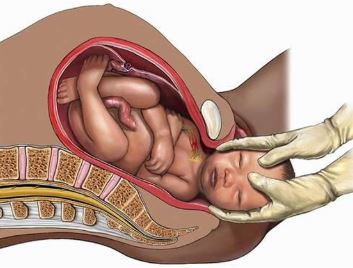Reviving Sukhaprasava - Classical Approaches to Promote Natural Vaginal Birth
DOI:
https://doi.org/10.21760/jaims.10.9.18Keywords:
Sukhprasava, Garbhini Paricharya, Yoni Pichu, Anuvasana basti, Antenatal care, Normal labourAbstract
Background: Sukhaprasava (normal labour) is considered a physiological process that should occur spontaneously without any complications. In Ayurveda, this concept encompasses a holistic approach to childbirth, ensuring not only the physical wellbeing of the mother and child but also addressing mental and spiritual health.[1]
Objectives: The primary objective of this review is to explore classical Ayurvedic references regarding Sukhaprasava and understand their applicability in the context of modern obstetric care. It seeks to highlight traditional practices that promote uncomplicated delivery and compare them with current lifestyle factors and medical trends affecting normal labour.[2]
Methods: A thorough literature review was conducted using classical Ayurvedic texts like Charaka Samhita, Sushruta Samhita, Astanga Hridaya, and Kashyapa Samhita. Contemporary scholarly articles were sourced from PubMed and Google Scholar to correlate traditional practices with modern findings.[3,4]
Results: Ancient Ayurvedic regimens such as Garbhini Paricharya (antenatal care), use of Anuvasana Basti and Yoni Pichu from the 8th to 9th month of pregnancy, and the design of the Sutikagara (labour room) contribute to facilitating smooth and safe delivery.[5,6] Advance maternal age, Lack of physical activity, increasing mental stress, improper dietary habits, and avoidance of squatting positions in contemporary lifestyles are significant factors contributing to the rise in unnatural deliveries.[7]
Conclusion: Emphasizing Ayurvedic principles in prenatal care and childbirth. Preparation has significant potential in supporting Sukhaprasava. These practices should be integrated into modern maternal health protocols to reduce the increasing dependency on surgical and pharmacological interventions during delivery.[8]
Downloads
References
Tripathi B. Caraka Samhita elaborated by Caraka and Drudhabala. Edited with Caraka-Chandrika Hindi commentary. Varanasi: Chaukhamba Surbharti Prakashan; p. 166.
Vatsya, Sharma H, Bhisagacharya S. Kasyapa Samhita revised with Sanskrit introduction. Varanasi: Chaukhamba Sanskrit Sansthan; 2018.
Sarasvati SS. Rigveda Samhita. Vol XIII. New Delhi: Vedapratishtan; 1987. p. 4701–4702, 4705–4706, 4732–4733, 1794–1797.
Bharathi K, Prasuna VVL. Ancient Indian knowledge of maternal and child health care: a medico-historical introspection of Ayurveda. J Indian Med Heritage. 2009;39:221–240.
Dwivedi K. Vedon Mein Ayurveda. 1st ed. Gyanapura: Vishva Bharati Anusandhana Parishad; 1993. p. 174.
Devichand MA. The Yajurveda: Sanskrit text with English translation. New Delhi: Munshiram Manoharlal Publishers Pvt. Ltd; 1994. p. 30, 77, 81, 104, 107, 112, 249.
Devichand MA. The Atharvaveda: Sanskrit text with English translation. New Delhi: Munshiram Manoharlal Publishers Pvt. Ltd; 1980. p. 9, 123, 199, 200, 217, 354–355, 616, 909.
Ayyar NSK. Garbhopanishad. Kanda 2 & 3. Sacred-texts.com; 1914. p. 116–117. Available from: http://www.sacred-texts.com/hin/tmu/tmu18.htm
Bharathi K, Prasuna VVL. Ancient Indian knowledge of maternal and child health care: a medico-historical introspection of Ayurveda. J Indian Med Heritage. 2009;39:221–240.
Maxmuller F. The Gruhyasutras. Part II. Delhi: Motilal Banarasidas; 1998. p. 52–54.
Pandey U. Apasthamba Gruhasutra. Varanasi: Chaukhamba Sanskrit Sansthan; 2005. p. 220–230.
Tripathi B. Caraka Samhita elaborated by Caraka and Drudhabala. Edited with Caraka-Chandrika Hindi commentary. Varanasi: Chaukhamba Surbharti Prakashan; p. 955.
Shastri ADK. Susruta Samhita. Shareera Sthan, Adhyaya 10/4. Varanasi: Chaukhamba Sanskrit Sansthan; p. 98–99.
Shastri L. Astanga Sangraha: Sarvang Sundari Commentary. Calcutta: Baidyanath Ayurved Bhawan; p. 462.
Tripathi B. Astanga Hridayam. Edited with Nirmala Hindi commentary. Delhi: Chaukhamba Sanskrit Pratishthan; p. 166.
Vatsya, Sharma H, Bhisagacharya S. Kasyapa Samhita revised with Sanskrit introduction. Varanasi: Chaukhamba Sanskrit Sansthan; 2018. p. 464.
Tewari PV. Ayurved Prasuti Tantra Evam Stri Roga – Prasuti Tantra (Obstetrics). Part 1. Varanasi: Chaukhamba Orientalia; 2011. p. 426.
Tewari PV. Ayurved Prasuti Tantra Evam Stri Roga – Prasuti Tantra (Obstetrics). Part 1. Varanasi: Chaukhamba Orientalia; 2011. p. 463.

Published
How to Cite
Issue
Section
License
Copyright (c) 2025 Smirti Mishra, Pradnya Shirke

This work is licensed under a Creative Commons Attribution 4.0 International License.














